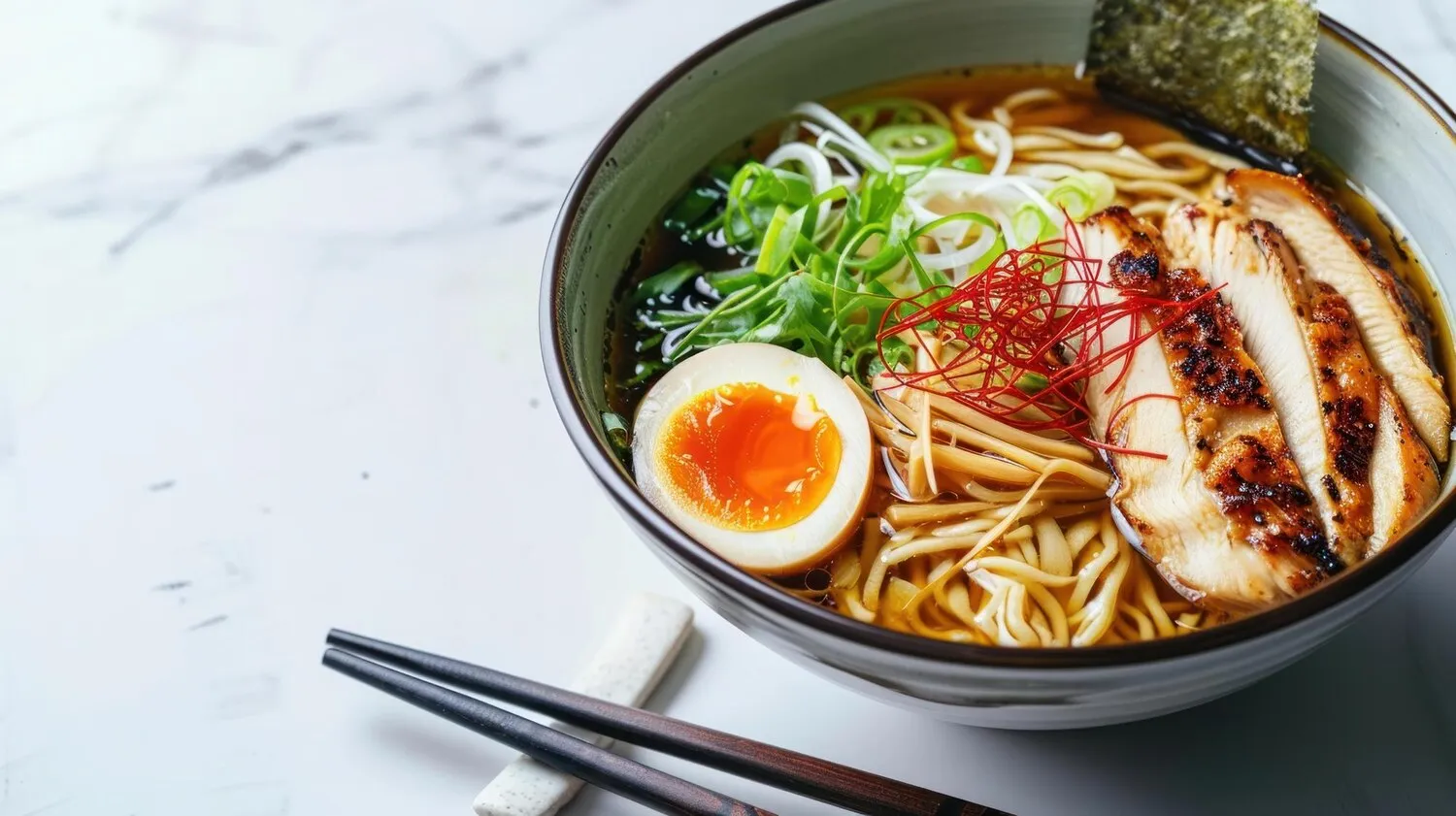
Ramen
Ramen is one of the popular dishes at Miyabi.
Nutrition Facts
* The % Daily Value (DV) tells you how much a nutrient in a serving of food contributes to a daily diet. 2,000 calories a day is used for general nutrition advice.
While the exact origins are debated, ramen's roots trace back to Chinese wheat noodles introduced to Japan, likely in the late 19th or early 20th century. It evolved from a simple noodle soup to a distinctively Japanese dish with regional variations and unique broths.
Ramen is deeply ingrained in Japanese culture as an affordable and accessible comfort food. It's a symbol of everyday life, often enjoyed after work or school. Ramen shops are ubiquitous, ranging from small, family-run establishments to large chains, each with their own unique recipes and specialties.
Ramen Culture
Eating ramen is often a quick and casual affair. Slurping the noodles is considered polite and enhances the flavor experience. It's common to see people eating alone at the counter.
Regional Variations
Different regions of Japan boast their own unique ramen styles, such as Hakata ramen (Tonkotsu broth) from Fukuoka, Sapporo ramen (Miso broth) from Hokkaido, and Tokyo ramen (Shoyu broth) from Tokyo. These variations reflect the local ingredients and culinary traditions.
Ramen as a Social Experience
Despite often being eaten alone, ramen is also a dish that brings people together. Ramen shops are popular gathering places, and sharing recommendations and experiences is a common way for people to connect.
Ramen is characterized by a rich and savory broth, wheat noodles with varying textures, and diverse toppings that contribute to a complex flavor profile. Umami is a key element, derived from ingredients like pork bones, chicken, seaweed, and mushrooms.
The broth is the heart of ramen, often simmered for hours to extract maximum flavor. Common broth bases include: Tonkotsu (pork bone), Shoyu (soy sauce), Miso (fermented soybean paste), and Shio (salt). Noodles vary in thickness, shape (straight or wavy), and hydration level, affecting their texture and how well they absorb the broth. Typical toppings include: Chashu (braised pork belly), Ajitsuke Tamago (marinated soft-boiled egg), Menma (fermented bamboo shoots), Nori (dried seaweed), Negi (green onions), and various vegetables.
Slurping Etiquette
Slurping noodles is not only acceptable but encouraged in Japan as it helps to cool the noodles and enhances the flavor. It's also seen as a sign that you're enjoying the meal.
Kaedama (Noodle Refill)
In some ramen shops, particularly those specializing in Hakata ramen, you can order 'kaedama,' a refill of noodles to enjoy with the remaining broth. It's a great way to savor the broth and extend your meal.
Customizing Your Order
Many ramen shops allow you to customize your order by specifying the firmness of the noodles, the richness of the broth, and the amount of toppings. Don't hesitate to ask for your preferences.
Don't let the noodles sit
Eat the noodles while they are hot and fresh, to prevent the noodles from expanding in the broth.
Explore additional Noodle Soup dishes and restaurants
Explore Noodle SoupDiscover top dining spots and culinary experiences in Bergamo.
Explore BergamoLearn more about the food culture, restaurant scene, and culinary heritage of Italy.
Explore Italy